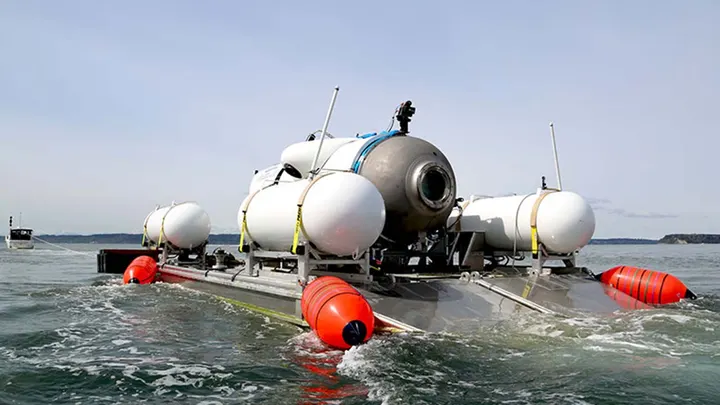A Massachusetts-based firm has been called on to help find the Titan submersible
Efforts to recover the remains of the Titan submersible, which suffered a catastrophic explosion near the wreck of the Titanic, are currently underway and, as of Sunday, descended to the ocean floor for a fourth dive.

Last Thursday, the U.S. Coast Guard confirmed that a debris field about 1,600 feet from the wreckage of the Titanic was indeed the missing Titan submersible.
With five people aboard the underwater vessel, contact with the surface ship was lost an hour and 45 minutes after the Titanic disembarked.
South Wellfleet, Massachusetts-based Pelagic Research Services (PRS) was approached by OceanGate, the company behind Titan, to use its remotely operated vehicles, or “ROVs,” to help with the search.
The ROV, named Odysseus 6K, discovered a “debris field” in OceanGate’s search area for the missing submersible on Thursday, June 22.
Now, the Transportation Safety Board of Canada and the U.S. Under the command of the Coast Guard and the U.S. With the help of the National Transportation Safety Board, PRS continues to use the ROV to recover the Titan.

On Sunday, Odysseus was on his fourth dive to the wreck.
“We continue to work tirelessly in our support role on this mission alongside Horizon Arctic’s excellent crew, led by Capt. Adam Myers,” said Ed Cassano, CEO of PRS, in a press release.
Odysseus’ subsequent dives following its initial dive to the site took the company to the U.S. Coast Guard and the U.S. Allowed to support Navy-led investigation and recovery.
Cassano said the PRS was successful in locating objects of interest as directed by the onboard command staff.
The mission will continue to use the ROV’s ability to lift heavy objects, the company said.
“This recovery phase is a very difficult and risky operation, especially at this depth,” PRS spokesman Jeff Mahoney said. “Given its continued operation under incredible atmospheric pressures, temperatures, and environmental stresses, it is a testament to the team’s skill and the engineering of Odysseus.
“We are very proud to have the ability to perform a full range of functions as this research progresses,” he said.
Odysseus is designed by PRS and built by MPH Engineering. It officially came into service in 2016.